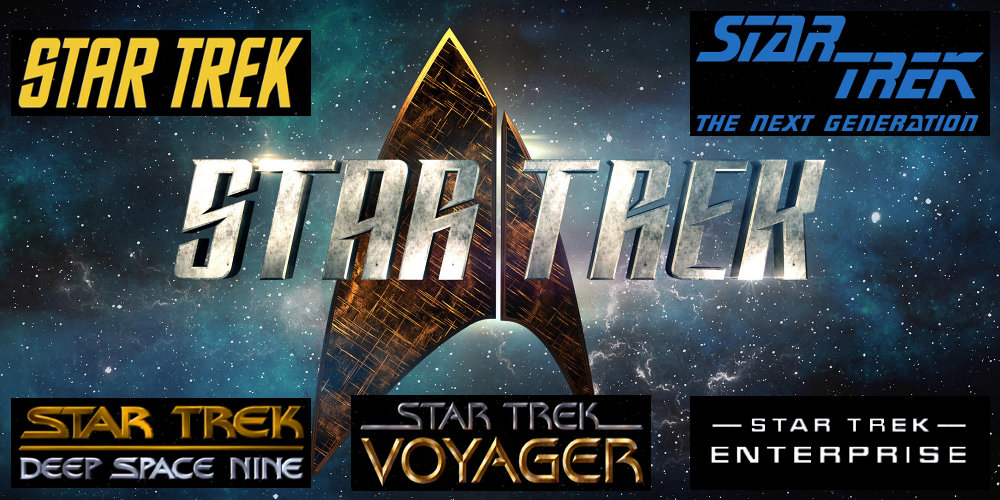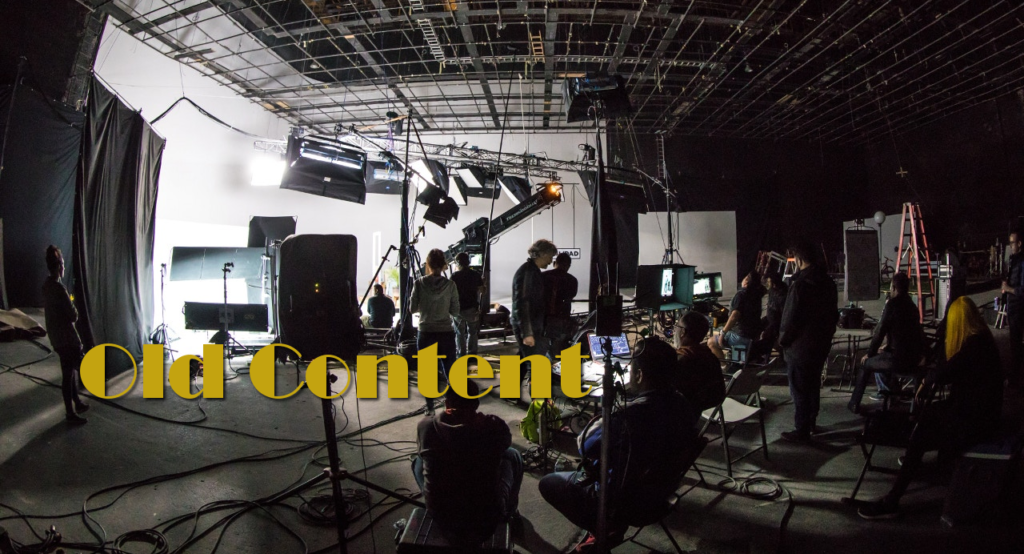 As any Star Trek fan will tell you, one of the enduring qualities of the series has been its ability to reflect society as a larger construct, paint the portrait of a future where individual physical differences are immaterial, and instill hope in a future where diversity brings us together and makes us stronger rather than divides us. 50 years after Gene Roddenberry’s legendary creation first aired on the Central Broadcasting System (CBS), the show continues to spark the imaginations of countless millions of fans around the globe. In honor of that, CBS is returning to the universe that started it all and producing their seventh series set in the not-too-distant future. All they need to do now is continue their remarkable casting decisions and put together not just a racially diverse cast, but one that is also sexually diverse. It’s time for a major gay character.
As any Star Trek fan will tell you, one of the enduring qualities of the series has been its ability to reflect society as a larger construct, paint the portrait of a future where individual physical differences are immaterial, and instill hope in a future where diversity brings us together and makes us stronger rather than divides us. 50 years after Gene Roddenberry’s legendary creation first aired on the Central Broadcasting System (CBS), the show continues to spark the imaginations of countless millions of fans around the globe. In honor of that, CBS is returning to the universe that started it all and producing their seventh series set in the not-too-distant future. All they need to do now is continue their remarkable casting decisions and put together not just a racially diverse cast, but one that is also sexually diverse. It’s time for a major gay character.
 To hear it told, countless young men and women saw something in the original series that gave them hope for the future. One of the most famous examples comes from Whoopi Goldberg, Oscar-winning actress, comedienne, and talk show host. While it was never uttered in an interview, Goldberg is often said to have related her first experience sitting down to watch the original series on television with the following quote: “…when I was nine years old, Star Trek came on. I looked at it and I went screaming through the house, ‘come here, mom, everybody, come quick, come quick, there’s a black lady on the television and she ain’t no maid!’ I knew right then and there I could be anything I wanted to be.”
To hear it told, countless young men and women saw something in the original series that gave them hope for the future. One of the most famous examples comes from Whoopi Goldberg, Oscar-winning actress, comedienne, and talk show host. While it was never uttered in an interview, Goldberg is often said to have related her first experience sitting down to watch the original series on television with the following quote: “…when I was nine years old, Star Trek came on. I looked at it and I went screaming through the house, ‘come here, mom, everybody, come quick, come quick, there’s a black lady on the television and she ain’t no maid!’ I knew right then and there I could be anything I wanted to be.”
 Goldberg was referring to actress Nichelle Nichols who played Lt. Nyota Uhura on the original series throughout its run from 1966 through 1969. As the U.S.S. Enterprise’s communications officer, she was more than a housekeeper or servant, roles that were too often held by black actresses in that period. She was a full-fledged member of the cast. Her position was never questioned. She was never demeaned for being either black or a woman and the series even gave her what is often considered one of the first interracial kisses on television, a scene she shared with co-star William Shatner. Goldberg would later make her own mark on the Star Trek universe in The Next Generation in an uncredited role as the Enterprise’s alien barkeep Guinan.
Goldberg was referring to actress Nichelle Nichols who played Lt. Nyota Uhura on the original series throughout its run from 1966 through 1969. As the U.S.S. Enterprise’s communications officer, she was more than a housekeeper or servant, roles that were too often held by black actresses in that period. She was a full-fledged member of the cast. Her position was never questioned. She was never demeaned for being either black or a woman and the series even gave her what is often considered one of the first interracial kisses on television, a scene she shared with co-star William Shatner. Goldberg would later make her own mark on the Star Trek universe in The Next Generation in an uncredited role as the Enterprise’s alien barkeep Guinan.
Unfortunately, not all was roses for the Nichols. As the first season was nearing an end, Nichols had been offered a chance elsewhere and told Roddenberry that she would be leaving the show. In an interview with Michael Martin on NPR, Nichols recalls that she was asked to give it the weekend to think it over. Saturday evening, while at an NAACP event, she met her biggest fan: Martin Luther King, Jr. After telling him she planned to leave, he told her “…don’t you understand what this man has achieved? For the first time, we are being seen the world over as we should be seen. He says, do you understand that this is the only show that my wife Coretta and I will allow our little children to stay up and watch.”
 That’s the influence that Trek has had on people. It gave young children a chance to see in these characters themselves and understand that they truly could be anyone. The original series didn’t just stop there. It also employed Walter Koenig as helmsman Ens. Pavel Chekov and George Takei as security officer Lt. Hikaru Sulu. Takei and his family had been prisoners at an internment camp in the U.S. during World War II. A Japanese American, Takei would be one of very few such actors on television in the period. His mid-season replacement, and later co-star, Koenig may not have been Russian, but he played the character Chekov with a fairly strong accent at a time when anti-Soviet rhetoric was strong.
That’s the influence that Trek has had on people. It gave young children a chance to see in these characters themselves and understand that they truly could be anyone. The original series didn’t just stop there. It also employed Walter Koenig as helmsman Ens. Pavel Chekov and George Takei as security officer Lt. Hikaru Sulu. Takei and his family had been prisoners at an internment camp in the U.S. during World War II. A Japanese American, Takei would be one of very few such actors on television in the period. His mid-season replacement, and later co-star, Koenig may not have been Russian, but he played the character Chekov with a fairly strong accent at a time when anti-Soviet rhetoric was strong.
With these three actors, along with Leonard Nimoy as Vulcan first officer Spock and Scotsman James Doohan as Scottish Chief Engineer Montgomery Scott, the racial, ethnic, and gender diversity of the series was among the many aspects that helped launch the series into the fan juggernaut that it has become. Diversity was to become a staple of the series through its myriad incarnations.
 In 1987, Roddenberry created a new series in the Trek universe bolstered by a series of successful big screen ventures starring the original series crew. In assembling his unique cast of characters, he pulled together another strong group of characters. This would go on for each successive series as outlined at the end of this article. Suffice it to say, the strains of diversity ring loud and clear in the Star Trek universe.
In 1987, Roddenberry created a new series in the Trek universe bolstered by a series of successful big screen ventures starring the original series crew. In assembling his unique cast of characters, he pulled together another strong group of characters. This would go on for each successive series as outlined at the end of this article. Suffice it to say, the strains of diversity ring loud and clear in the Star Trek universe.
While having vivid and broad-ranging casts is important, tackling issues is a key part of the universe. Science fiction often reflects society back at us through the lens of a future time when prejudice and poverty have been eliminated (or enhanced if you look at dystopian sci-fi). Roddenberry’s was very much a Utopian vision of the future, which is reflected in individual episodes. They have tackled many topics, but aside from the interracial kiss referenced previously, the show has also done some interesting things with interracial marriage as well as a brief foray into bisexuality.
 These two topics were addressed in Star Trek: Deep Space Nine, one of the most vast character studies in the franchise. Situated on a space station on the brink of an interstellar wormhole, the former mining station orbiting the planet Bajor offered unique chances to watch the characters grow alongside a strange and eclectic group of aliens, each with their own goals and prejudices. It explored conflict within the Utopian ideals of Star Trek with aplomb.
These two topics were addressed in Star Trek: Deep Space Nine, one of the most vast character studies in the franchise. Situated on a space station on the brink of an interstellar wormhole, the former mining station orbiting the planet Bajor offered unique chances to watch the characters grow alongside a strange and eclectic group of aliens, each with their own goals and prejudices. It explored conflict within the Utopian ideals of Star Trek with aplomb.
Interracial marriage was tackled not once, but twice. The first was the marriage of Chief Engineer Miles O’Brien (Colm Meaney), a carry-over from The Next Generation, where he was merely a transporter chief, to botanist Keiko Ishikawa (Rosalind Chao). The second was between two aliens, Worf (Michael Dorn, a mid-series shift from The Next Generation to Deep Space Nine), a Klingon, and Jadzia Dax (Terry Farrell), a joined Trill.
Jadzia would become the series’ only major cast member to briefly flirt with bisexuality. The Trill race is comprised of a symbiont alien (Dax) that takes up residence in a host body (in this case Jadzia). Their symbiotic relationship allows one host to recall with clarity the memories and emotions of all prior hosts, both male and female. This allowed the series’ writers to craft stories that flirted with lesbian romance between Dax and the former lover of a prior male host. It was a brief endeavor that once again parlayed the series’ sociopolitical science fiction roots into important social commentary.
 With such a strong history of gender and racial casting parity, one of the few minorities that has failed to earn its place in the vaunted halls of Trek history are homosexuals. It might be easy to say that sexuality just isn’t a big deal in the 23rd or 24th centuries, and it might not be, but with the various romantic adventures and exploits the crew members of the many series, it’s clear that sexuality is still a major aspect of the lives of these people. As such, it’s imperative that gay men and women have fair representation in CBS’s new show.
With such a strong history of gender and racial casting parity, one of the few minorities that has failed to earn its place in the vaunted halls of Trek history are homosexuals. It might be easy to say that sexuality just isn’t a big deal in the 23rd or 24th centuries, and it might not be, but with the various romantic adventures and exploits the crew members of the many series, it’s clear that sexuality is still a major aspect of the lives of these people. As such, it’s imperative that gay men and women have fair representation in CBS’s new show.
A gay captain might be a tough sell, but were Captain Sisko in Deep Space Nine and Captain Janeway in Voyager not proof that changing things up in the captain’s chair can be done? Even the other major sci-fi program with significant longevity, Doctor Who, spun off a series around one of its few gay characters: John Barrowman’s Jack Harkness.
 It doesn’t have to be the captain, but he or she needs to be a major character, not one pushed to the periphery to receive minimal character development and few romantic interludes of his or her own. Perhaps the ship’s Chief Medical Officer is a gay man or the head of security is a lesbian. Whatever the role, he or she needs to be key to the ship’s successes and failures each week and must be given the chance to explore romantic feelings, possibly with another crew member. Whatever you do, though, don’t kill off the character’s love interest just to create an emotional moment. That’s been done far too many times and has become a sign of what not to do if you care about a gay character in a major role.
It doesn’t have to be the captain, but he or she needs to be a major character, not one pushed to the periphery to receive minimal character development and few romantic interludes of his or her own. Perhaps the ship’s Chief Medical Officer is a gay man or the head of security is a lesbian. Whatever the role, he or she needs to be key to the ship’s successes and failures each week and must be given the chance to explore romantic feelings, possibly with another crew member. Whatever you do, though, don’t kill off the character’s love interest just to create an emotional moment. That’s been done far too many times and has become a sign of what not to do if you care about a gay character in a major role.
When you cast this gay character, he or she should be played by a gay actor. Too often straight actors have gotten the privilege of playing gay roles as a way to sate the public’s supposed bias against such characters. This is a great opportunity to show just how diverse the Star Trek universe is.
It’s not easy to cast gay roles these days and I’m sure you will want someone with the gravitas or the talent to pull off the character effectively. Might I suggest any one of these gay men and women to take on such a role. I’ll lead off with Matt Bomer. He has plenty of experience with episodic television, he has a Primetime Emmy Award nomination, and already has a devoted fan base. You could support three diverse options hiring Raven-Symoné. Oscar nominee Ellen Page probably isn’t up for television, but has a killer resume. Ben Whishaw has a fascinating pedigree, plus he’s British, so the accent works for him. Gillian Anderson already has The X-Files, so I seriously doubt she’s ready for more television, but is a great actress. Ian McKellen would be a great catch for the series and he could follow his pal Patrick Stewart into the franchise, but it would require him living in the U.S. for awhile and I doubt he’s interested in such a requirement.
Kyle XY‘s Matt Dallas understand television as well and might not be too hard to get. Wanda Sykes is a terrific comedienne and would be great in a guest role, but I doubt she’s up for the dramatics a multi-year program would require. Last I checked T.R. Knight isn’t doing much. There’s also Craig Parker, Cheyenne Jackson, Jane Lynch, Jeremy Sheffield, Sara Gilbert, Miriam Margolyes, Guillermo Diaz, Russell Tovey and countless others. Some of them are busy with other television programs, some of them are readily available. All of them prove that you don’t have to look far to find gay actors and actresses capable of filling the void.
While we’re at prepping the show’s diversity, there are two other roles that need some attention. In all the various incarnations of the show, we’ve had female captains, female security officers, female medical officers, female science officers, female counselors, female communications officers, and female engineers. The only place we haven’t had a woman is the helm. To date, all of the primary cast helmsmen have been men. Let’s break that one last barrier and put a woman in the role.
 The other topic of discussion is the ship’s captain. While I think Bomer would make an excellent captain, my personal choice for the role is Angela Bassett. Oscar nominee, Golden Globe nominee, and Emmy nominee, Bassett is as terrific as they come. She has acting chops. She has done incredible work on television, including on the American Horror Story anthology series, and would make a fantastic starship captain. Not only would she bring copious amounts of diversity to the lead role, but she’d add a level of gravitas that could help guide the series to a long and fruitful life.
The other topic of discussion is the ship’s captain. While I think Bomer would make an excellent captain, my personal choice for the role is Angela Bassett. Oscar nominee, Golden Globe nominee, and Emmy nominee, Bassett is as terrific as they come. She has acting chops. She has done incredible work on television, including on the American Horror Story anthology series, and would make a fantastic starship captain. Not only would she bring copious amounts of diversity to the lead role, but she’d add a level of gravitas that could help guide the series to a long and fruitful life.
Diversity on television is at its highest level in history. Representation of the gay community is strong in many areas, but there are still plenty of areas for improvement. Star Trek has always been a leader in broad representation of race and gender on television. It now has the opportunity to expand that influence by adding a gay character to its production. No casting has been done and the series isn’t set to debut until 2017, so there’s plenty of time to make the right decision. Star Trek needs a major gay character and there’s no better time than the present. Perhaps then, in 20 years’ time, you’ll have some successful businessman, astronaut, or actor proclaim that Star Trek allowed him or her to recognize himself in the character and say to someone else regarding their success: “I knew right then and there I could be anything I wanted to be.”
A Guide to Racial and Gender Diversity on “Star Trek”
Women As Major Characters
Women by far have the best representation in the five live-action series so far. Along with Nichols in Star Trek (1966-1969), Majel Barrett (the future Mrs. Roddenberry) had a recurring role as Nurse Christine Chapel. In Star Trek: The Next Generation (1987-1994), there were three prominent female characters: Marina Sirtis as ship’s counselor Deanna Troi; Gates McFadden as Chief Medical Officer Beverly Crusher, who stepped away from the show briefly and replaced for that period with Diana Muldaur as Dr. Katherine Pulaski; and Denise Crosby played the Chief of Security Lt. Tasha Yar during the first season only. On Star Trek: Deep Space Nine (1993-1999), only two women had significant roles, but they were pivotal: Nana Visitor played an alien (Bajoran) named Kira Nerys, resistance fighter who became second-in-command to the ship’s captain; Terry Farrell as the station’s science officer, Jadzia Dax, another alien (Trill); and when Farrell left the show, she was replaced by another host for the Dax symbiont, played by Nicole de Boer, named Ezri.
After Next Generation ended, Star Trek: Voyager (1995-2001) took over placing a woman at the top of the roster as Kate Mulgrew took on the role of Kathryn Janeway. She was supported by the alien (Klingon) Chief Engineer B’Elanna Torres played by Roxann Dawson; Jennifer Lien as the alien (Ocampan) field medic Kes; and Jeri Ryan came onto the show in 1997 to enliven the festivities as a human female who had been assimilated by the Borg (a hive-minded alien race that integrates the knowledge of its assimilated targets) who was reclaimed by the crew of the U.S.S. Voyager, but continued under her hive designation Seven of Nine. Following Voyager, the last Star Trek series to air on television, Enterprise (2001-2005) featured only two main female characters. Jolene Blalock was the second woman to play second-in-command on a Trek series and was also an alien (Vulcan), a character named T’Pol; and Linda Park played communications officer Hoshi Sato.
Major Characters Played by Non-White Actors
In the original series of Star Trek, the previously cited Nichelle Nichols and George Takei were the lone non-white actors in any role; The Next Generation featured Michael Dorn as Lt. Worf, an alien (Klingon) tactical officer; and LeVar Burton as Chief Engineer Lt. Cmdr. Geordi LaForge, a human who also represents the lone character with a physical disability, presumably because most of these disabilities have been eradicated through advances in science. Even LaForge wears a visor that enables him to see, if somewhat differently.
On Deep Space Nine, the series picked up its first black captain, Benjamin Sisko played by Avery Brooks; along with Cirroc Lofton as his son Jake; Dorn reprising his role as Worf; and Sudanese actor Siddig El Fadil (who later changed his name to Alexander Siddig) as the ship’s doctor Julian Bashir. For Star Trek: Voyager, Roxann Dawson is joined by Robert Beltran as Chakotay, a Native American Maquis officer forced to join the Federation crew; Tim Russ as security officer Tuvok, a Vulcan (alien); and Garrett Wang as helmsman Harry Kim. on Enterprise, Linda Park has fellow actor Anthony Montgomery playing helmsman Travis Mayweather at her side.
Other Major Characters That Exemplify Futuristic Racial Diversity
It might be a stretch to classify aliens like Vulcans and Klingons as diverse characters, but when you look at how the future is constructed and the enemies that are present who are ready to destroy the purity of the United Federation of Planets, bringing together voices from different worlds around the galaxy in harmony and unity is not just a noble effort, but is key to explaining how diversity can be embodied in alternative ways in a science fiction program. I’ll also be listing any actors who play characters of represent non-American nationalities, an equally important demographic.
Starting with The Next Generation (the original series has been discussed in depth previously), we add to the list that includes Michael Dorn’s Klingon Worf: Brent Spiner as the emotionally vacant android operations officer Data who constantly yearns to be more “human.” Deep Space Nine‘s Nana Visitor, Terry Farrell, and Dorn are joined by Rene Auberjonois as the shapeshifting alien Odo, the station’s security chief; Colm Meaney as Irishman Miles O’Brien; and Armin Shimmerman as the Ferengi (alien) barkeep Quark.
For Voyager, joining Roxann Dawson, Robert Beltran, Tim Russ, and Jennifer Lien are Ethan Phillips as Talaxian (alien) chef and navigator Neelix; and Robert Picardo as their holographic doctor. Finally, Enterprise takes Jolene Blalock and adds John Billingsley as the Denobulon (alien) Dr. Phlox.






































































Leave a Reply
You must be logged in to post a comment.